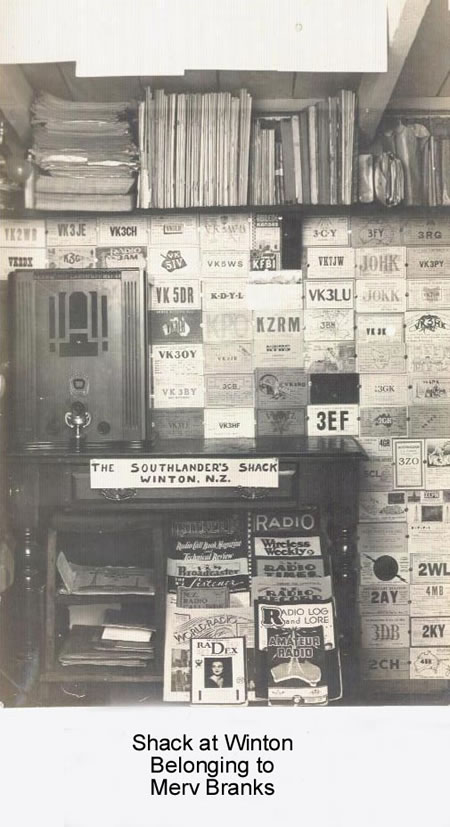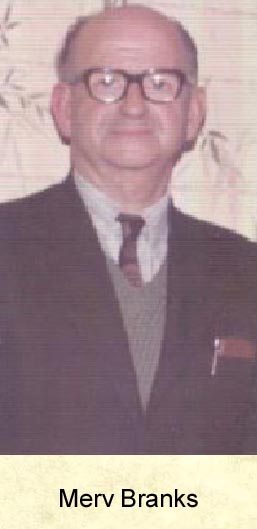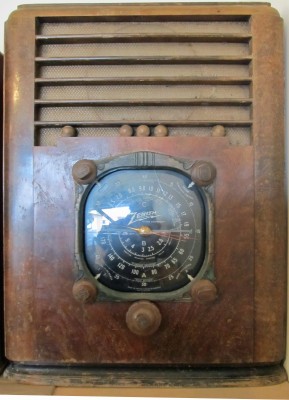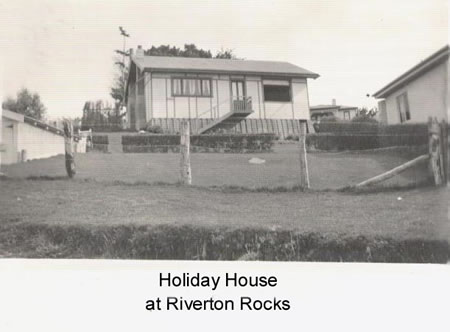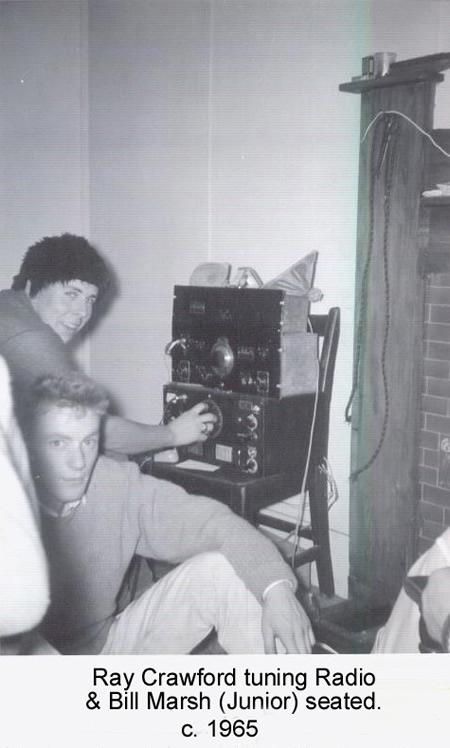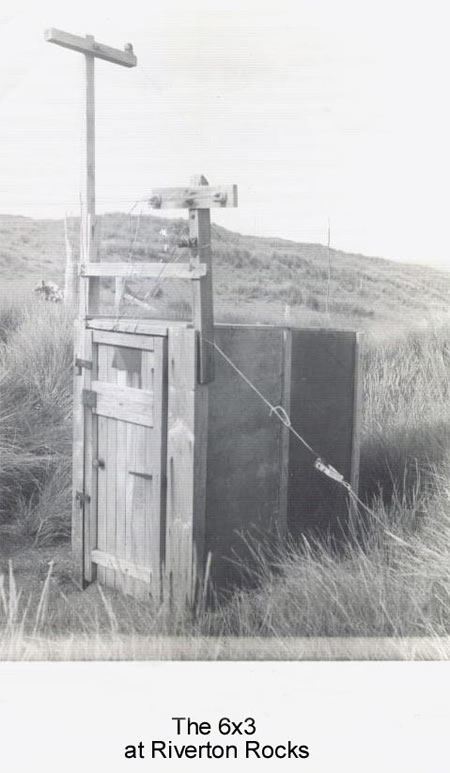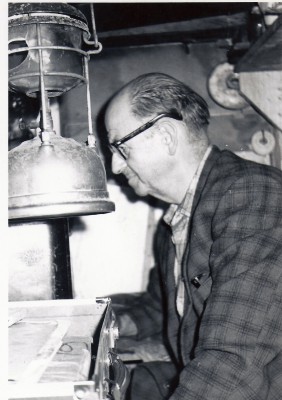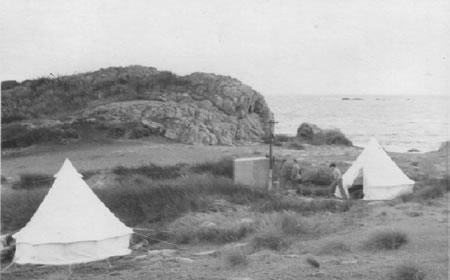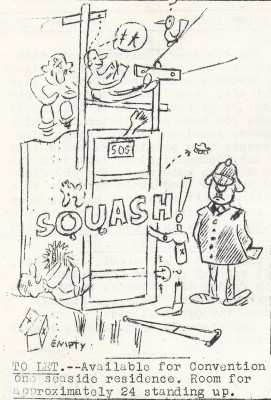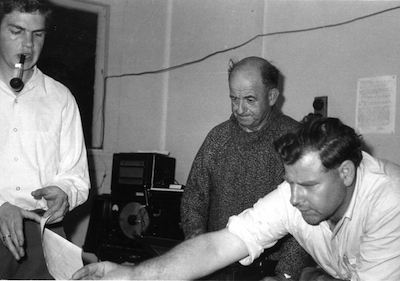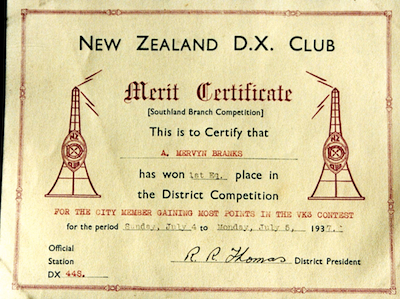Merv Branks and the 6×3 – A Tribute
Merv DXed at Winton, Southland. The interest in radio began while Merv was a boy. He often helped his father, who had a franchise for radio sets in the early 1920’s, with their installation and erection of aerials, so necessary for good reception in those early days.
He was in the newspaper game at “The Winton Record” and “The Southland Times” for some 25 years before taking over a milk-bar cum grocery store. He was associated with DX journalism since the early days as a contributor to many DX Club organs such as, “The Radio Record”, “The Radio Log”, and “The Radio Times”. He used the pseudonym, ‘The Southlander’, which most dx reporters of the time were apt to do when reporting to the magazines. Merv became the editor of “The N Z DX-tra” a position he held for eight years and following that he edited “DX Bulletin (N Z)” pending the formation of the NZ Radio DX League. He was Editor of the DX Times for at least 10 years from 1948.
He began DXing in May 1927 but didn’t know about verification cards until 3ZC Christchurch verified a letter in January 1928. In 1949 he used a 10 tube American Zenith which was replaced in 1950 by a Bill Marsh (Senior) Special 11 tube communications receiver.
Merv occupied many executive positions in our hobby and his experiences were always keenly sought when DXers met. He was responsible for negotiating the changeover when DXers took over the NZ DX Club from “Natmags Ltd’ and formed an amateur organisation. Merv played a role when the League was planned and was a member of the Board of Directors at its formation. The Constitution of the NZRDXL is mainly moulded along the lines suggested by him, and the League badge is an adaptation of Merv’s original design, while the ladder competition and its rules were his brainchild.
At night after working until late at the Souhland Times he would search the dial for the VK’s, Australian amateur operators who were allowed to operate with low power , usually a few watts, on the broadcast band. His collection of VK verifications built up at this time, was second to none.
Some of his better verifications include VK2AJ with 2 watts, VK5IV 3 watts, VK5RM 10 watts ( apparently the only person to have heard this one in NZ), all on broadcast of course, three 25 watt Japanese stations, XHHH and XHHG both 100 watts, JBAK 250 watts, WOSH 75 watts and Radio 37 Paris 2kW. There were many 100 watt and 250 watt American stations verified over the years.
My earliest recollections of Merv are as a grocer by day, until retirement, and a DXer by night. The family home at this time was in Dublin Street in North East Invercargill. He had room for a modest aerial system heading in an ENE direction. Radios used at this location were the Zenith model 12 or 16 and “Marsh Special”.
The family also owned a reasonably large crib (bach for the benefit of North Islanders) at Riverton Rocks (below), 25 miles west of Invercargill.
Merv and his wife Netta owned and operated a grocery business in Tay Street Invercargill for the latter part of their working life. For many years (at least the years I remember) he owned a dark blue Ford Prefect car which was probably about a 1952 model. This car was used to deliver groceries and in addition to family transport was used to travel to Riverton Rocks. Ray and I (below), along with many other DXers over the years have travelled to Riverton Rocks with Merv in this little car and I am convinced it knew its own way.
The crib at Riverton Rocks was set up with aerials heading toward the north westerly aspect. Initially I think there was about three in all and these terminated on a large tree not far from the back door. Down leads were brought into the lounge area of the crib and connected to the receiver by way of several knife switches. I can well remember that Merv used to scale this tree at intervals sometimes in the middle of the night. I understand that the salt air played havoc with the down lead connections to the aerials proper. Merv used to still undertake this climb when he was well into his fifties. I was not bad at climbing trees myself as a youngster, but shied away from this one when asked one day. The Zenith and “Marsh Special” were transported to this location for DX weekends etc. The crib itself was quite large and had several bunk rooms and two large areas serving as lounge and dining room. Both these latter two rooms had shutter windows that opened right out to the east to reveal the sea just over the road from the front of the property.
The view from the windows was very spectacular as the elevation of the section rose up reasonably steeply from the roadside. Many a DX weekend etc. and convention was held at this crib, as it was ideal for a large crowd. The first annual meeting of the League was held here on the 8th & 9th October 1949. The usual February DX weekend of the Southland Branch was an annual event for a good number of years. I recall that during the day some of the DXers would go swimming in the bay. The bay was the last bay before crossing a cattle stop and entering the wilderness area of the Rocks itself, so was reasonably private. A number would also get the surf board out of Merv’s garage and have a go. I remember one of the specialities from the kitchen was mussel soup using milk. The mussels were quite plentiful on the rocks in those days.
Sometime probably in the late 1950’s a high voltage power line was installed to service a growing sub-division to the West of Merv’s crib. This resulted in his having to dismantle his aerials, however one shorter one remained. In addition to the restriction this line created, it brought with it power noise probably stemming from saltwater spray on the insulators. Eric McIntosh also owned a crib in this sub-division and although his aerials were not effected, he to was subject to some power noise.
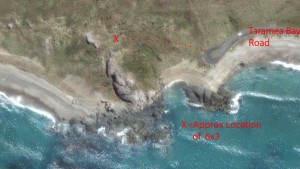
As a consequence of this problem Merv investigated the possibility of establishing a listening post in the sand hills at the “Rocks” proper, and so was born the famous “6×3” (below) as is was to become known as.
He established a hut measuring six feet long, three feet wide and probably about five feet high at a suitable high point in the sand dunes. I recall that it was a piano case originally but was clad on the exterior with galvanised iron sheet to make it weatherproof. It was probably Des Frampton who had the job of supplying all the sheeting and soldering all the joints, as he was a plumber by trade. One end of the hut became the door. The siting of the hut was such that aerials could be erected in all the right directions for North America and Europe. I recall about 6 aerials in all, with 3 towards North America and 3 towards Europe and Asia. Each beverage aerial consisted of single strand hard drawn copper wire ex telephone services. They were elevated on manuka sticks and screw type insulators at intervals throughout their length and most were of the order of 1,000 feet long.
The inside of the hut was a work of art. Along the entire length of one wall (left side when entering doorway) was a shelf measuring about one foot deep mounted at about bench height which was used to place the radio, stationery and food etc. on. A 6 volt car battery was placed under this shelf along with any other heavy items that may have been brought onto the site. Along the entire length of the opposite wall was another wider shelf mounted slightly lower for sitting on. This could seat 3 people and later in the night, became Merv’s bunk. If three were staying over, as Ray Crawford and I have done so many times, the other two had to huddle into the space underneath making sure your sleeping bag did not make contact with the car battery and its usually acid splashed outer case.
There was a sky hook in the roof from which hung a pressure kerosene lantern which served for both lighting and heating. You had to be careful not to let the mosquitoes and moths in at night. It was always a hurried exit and entry during the night when nature called. There was never a shortage of food with Merv being in the grocery trade. Providing you didn’t mind cold pies, mouldy cheese and over-ripe bananas you were usually well fed during the night. The aerial down-leads connected to a rotary switch which then went off to the receiver.
As referred to earlier, Merv used a Phillips receiver which had been retrofitted by Bill Marsh (senior). In its original state it used 2 volt side contact valves and these were replaced with the EF41 series, including any necessary wiring/component changes and was powered from a 6 volt vibrator pack. Several conversions occurred over the many years this receiver was used. I recall installing Hi “Q” IF’s which Merv had imported specially from Holland into it, to improve the selectivity. I even recall the coil set being changed at one time. It used to drift around a bit at the top end of the broadcast band during the course of a DX session, probably due to transportation and environment, but Merv had tuning down to a fine art between its trips to the workshop at number 429. There was always a pencil and a rubber at the ready for drastic changes on the dial. This old receiver must have accounted for many hundreds of verifications for Merv and others over the years.
DX weekends etc. continued to be held at Riverton Rocks with tents being pitched all around the “6×3” and other receivers brought into the sand dunes (below). Leads were tapped off the main aerials for reception. The crib at the bay was used as the headquarters, for meals and for those that needed to catch up on some sleep or just wanted a more comfortable bed to sleep in.
The “6×3” was always a curiosity to the public who visited this area and some even looked on it with suspicion. Merv had to deal with vandalism over the years and resorted to all sorts of signage to deter entry into the “6×3”. There was a sign on the door of the 6×3 stating, “Wolsely Electric Fence”. One morning Merv was awoken by a lot of banging on the door. Voices were heard to say; “These electric fences are pretty high – what do they farm here, bloody giraffes?” The aerials also became the target of copper wire thieves at times and Ray and I have spent many number of hours assisting Merv with repairing or erecting replacement ones.
Eventually as Merv grew older the trips to the “6×3” stopped, and this great listening post faded into history. By this time the now famous listening post at Tiwai was well established, and took over with respect to DX weekends etc.
The 6×3 became the subject of a poem and conjecture from the locals.
Here is a short extract from the DX Digest:
From the February 1963 issue of the “Southland DX Digest”
Convention to be held at the Rocks (Directions for getting to Riverton Rocks)
Ngapohatu so the Maoris called it is Southland’s most favourite seaside resort. It is also a favored DX Location with five DXers owning or having parents with bachs there. The 6’x3’ is possibly the most unique listening post in New Zealand. Leaving from the Post Office, (Invercargill) DXers will proceed out the Great North Road over which once the gold escorts from the Queenstown diggings did thunder. Nearing Lorneville one sees the new wool store of Dalgety and N.Z. Loan under construction, its five acres being the biggest floor area in Southland. Round the corner and past the “White House” which before the days of the Invercargill Licensing Trust, was reputed to have the biggest bar accommodation in the Southern Hemisphere. The new Alliance Freezing Works are working on the left, the most modern in New Zealand and adjacent to them Nestles Highlander Milk Factory, the only one of its kind in the Dominion. Another peculiarity about this district is Davy Hawkes, the DXer who verifies one station a year. Approaching the seaside township, the Riverton Racecourse is on the right, the most prosperous in the province, and rounding the crescent past the Hospital Buildings, Riverton is entered. This is the oldest settlement in the south having celebrated its Centennial in 1937 and it is situated at the mouth of the Aparima River on the estuary formed by its confluence with the Pourakino River. After crossing the bridge The Rocks is a mile further on. DXers will be staying in five cribs which will be available for sleeping purposes at any period during the 24 hours. There is also cot in the Foster crib and this is for the Young. Meals will be at Fosters but all other gatherings will be at Merv’s.
THE EXTREMES SOUTHLAND DXers WENT TO
TO GET AWAY FROM INTERFERENCE
From the February 1963 issue of the “Southland DX Digest”
Scanned by Bill Marsh (Jnr) in 2013
Pioneers of Outdoor Listening to DX
Since Keith Robinson first pushed his battery set round his farm in a wheelbarrow and hitched on to a wire fence, Southland DXers have been conquering man-made interference by getting away from power lines. How successful they have been is evidenced by —–
Tents Erected in Sandhills
DX locations will be set up in the sand hills where three tents as well as the 6 x 3 will be in action. DXers have been allotted to tents and each tent has had a messenger appointed who will keep in touch with the loggings being made and to pass the information on. Two SW posts will be set up at the McIntosh and Branks cribs.
The Antennae Array
The aerials at the 6 x 3 are as follows:
No. 1 beamed 67deg (ENE) 800 feet long (USA) –
No. 2 beamed 65deg (ENE) 760 feet long (USA)
No. 3 beamed 55deg (NE) 600 ft (Canada-USA)
No. 4 beamed 50deg (NNE) 550 ft (Hawaii-Alaska)
No. 5 beamed 260deg (NW) l050 ft (Asia)
No. 6 beamed 260deg (NW) 250 ft (Asia-Florida)
No.7 beamed 270deg (WNW) l060 ft (India-Afrika)
A grand circle map on the wall at Merv’s crib centred on Awarua (15 miles from Rocks) gives some surprising information on the shortest distances to overseas countries.
Some other Jottings included:
The latest acquisition is the Otatara listening shack of Bill Marsh. Situated in native bush on the lower reaches of the Oreti river, 7 miles from the city … massive lists of stations are being compiled by those DXers regularly visiting this site. Bill uses a Hallicrafters (S18) converted to battery operation.
Neville Ross (in the Waikiwi swamp) and Eddie MacAskill (at Awarua Bay) and Des Frampton (at Omaui) have shacks more or less active.


